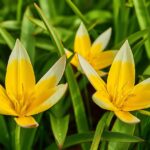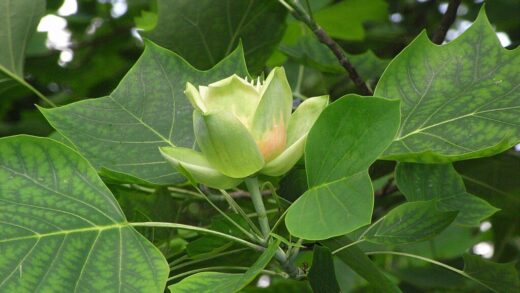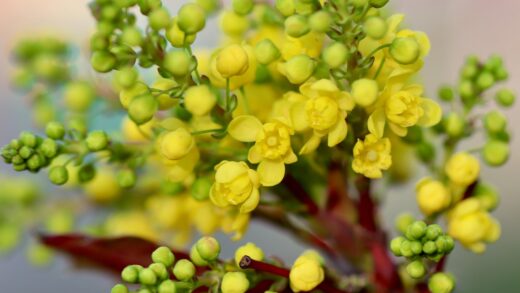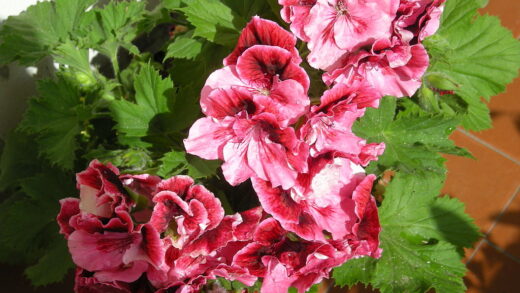The care of the Delta maidenhair fern

The Delta maidenhair fern, with its delicate, feathery fronds and graceful arching habit, is a truly captivating houseplant that brings a touch of woodland elegance to any indoor space. Its vibrant green, fan-shaped leaflets are arranged on wiry, black stems, creating a stunning contrast that is both airy and lush. Achieving success with this particular fern requires an understanding of its native habitat and a commitment to recreating those conditions as closely as possible within the home environment. Consistent care and attention to its specific needs are paramount, as this plant is not forgiving of neglect and will quickly show signs of stress if its requirements are not met.
Cultivating a thriving Delta maidenhair fern begins with a deep appreciation for its unique sensitivities, which set it apart from more robust houseplants. This is not a plant that tolerates a ‘set it and forget it’ approach; rather, it demands a mindful and observant caregiver. Fluctuations in moisture, light, or temperature can swiftly lead to browning fronds and a general decline in health. Therefore, establishing a regular and consistent care routine is the cornerstone of successfully growing this beautiful fern. This routine should encompass all aspects of its environment, from the air it breathes to the water it receives.
The reward for providing meticulous care is a plant that remains perpetually lush and vibrant, a testament to a healthy and well-maintained indoor ecosystem. A flourishing maidenhair fern is a dynamic and responsive plant, constantly unfurling new, tender fronds, known as crosiers or fiddleheads. Observing this new growth is one of the most satisfying aspects of its cultivation, signaling that the provided conditions are ideal. It is this delicate balance of care and observation that transforms the challenge of growing this fern into a rewarding horticultural pursuit.
Ultimately, the journey of caring for a Delta maidenhair fern is one of patience and learning. It teaches the grower to become more attuned to the subtle cues that plants provide about their well-being. By understanding its need for high humidity, consistent moisture, and gentle light, you can create a sanctuary where this delicate species can not only survive but truly thrive. This dedication allows the fern’s timeless beauty to be fully appreciated, making it a prized specimen in any plant collection.
Understanding its native environment
To truly master the care of the Delta maidenhair fern, one must first understand its origins and the environment in which it naturally thrives. This species is native to the tropical and subtropical regions of the Americas, where it is often found growing in deeply shaded, moist locations. It typically inhabites areas near waterfalls, along stream banks, and in the damp crevices of rock faces, places where the air is consistently humid and the soil is perpetually damp but well-draining. These conditions provide the foundational clues for its successful indoor cultivation.
More articles on this topic
The high humidity of its native habitat is perhaps the most critical element to replicate in a home setting. In a typical household, especially one with central heating or air conditioning, the air is far drier than what this fern requires. This lack of ambient moisture is a primary cause of crispy, brown leaf edges and overall plant stress. Therefore, providing supplemental humidity is not just beneficial but essential for its long-term health and survival. The goal is to mimic the misty, moisture-laden air of its jungle home.
Another key aspect of its natural environment is the quality of light. The Delta maidenhair fern grows under the dense canopy of larger trees, which filters the harsh sunlight. It is accustomed to receiving bright, but indirect, dappled light throughout the day. Direct sun exposure, even for a short period, can scorch its delicate fronds, causing irreversible damage. Recreating this gentle illumination is crucial for maintaining the vibrant green color and delicate texture of its foliage.
The soil composition in its native setting is also informative. It grows in rich, organic matter that is constantly being replenished by decaying plant material. This soil is loose and airy, allowing for excellent drainage, which prevents the fine, delicate roots from becoming waterlogged and rotting. While the soil remains consistently moist, it is never stagnant or overly saturated. This balance of moisture retention and aeration is a vital component to replicate in its potting medium.
Ideal location and placement
Choosing the right location for the Delta maidenhair fern within the home is a decisive factor in its overall health and longevity. The ideal spot will provide the perfect balance of light, temperature, and humidity, while also protecting it from environmental stressors. A north-facing window is often considered the perfect placement, as it offers bright, indirect light for most of the day without the risk of direct sun exposure. An east-facing window can also be suitable, provided the morning sun is not too intense or is filtered through a sheer curtain.
More articles on this topic
Bathrooms and kitchens are frequently recommended as prime locations for this fern, primarily due to the naturally higher humidity levels in these areas. The steam from showers and cooking helps to create the moist atmospheric conditions that the maidenhair fern craves. Placing the plant on a countertop or a shelf in a well-lit bathroom can provide a microenvironment that closely mimics its native habitat. This placement can significantly reduce the need for constant misting or the use of a humidifier.
It is equally important to consider what to avoid when selecting a location. Keep the fern away from drafts, which can cause rapid moisture loss from its delicate fronds and lead to sudden browning. This includes avoiding placement near open windows, doors, or vents for heating and air conditioning systems. Sudden temperature fluctuations are also stressful for the plant, so it should be kept away from radiators, fireplaces, or other sources of direct heat.
Finally, consider the plant’s need for stable conditions. The Delta maidenhair fern does not respond well to being moved frequently. Once you have found a suitable location where it appears to be thriving, it is best to leave it there. Constant relocation forces the plant to repeatedly acclimate to new light levels and microclimates, which can inhibit its growth and cause unnecessary stress. A consistent and stable environment is key to its long-term success.
Soil and potting requirements
The foundation of a healthy Delta maidenhair fern lies in its root system, making the choice of soil and potting container critically important. The ideal potting medium must strike a delicate balance between retaining adequate moisture to keep the roots consistently damp and providing sufficient aeration to prevent waterlogging and root rot. A standard, all-purpose potting mix is generally too dense and will hold too much water for this fern’s fine, delicate roots. Therefore, a custom or specialized mix is highly recommended for optimal results.
A high-quality potting mix for the Delta maidenhair fern should be peat-based, which provides excellent moisture retention and a slightly acidic pH that ferns prefer. To improve drainage and aeration, this base should be amended with materials such as perlite, vermiculite, or coarse sand. Adding a component of rich organic matter, like compost or leaf mold, will not only enhance the soil structure but also provide a slow release of essential nutrients. The final mixture should feel light, fluffy, and be able to drain freely when watered.
The choice of pot is just as significant as the soil mixture itself. Terracotta or unglazed clay pots can be problematic for maidenhair ferns because their porous nature allows moisture to evaporate too quickly from the soil. This can lead to the soil drying out faster than the plant can tolerate. Instead, it is preferable to use plastic or glazed ceramic pots, which are non-porous and help to maintain the consistent moisture levels that are so crucial for this plant’s survival.
Proper drainage is non-negotiable, regardless of the pot material. Ensure that the chosen container has at least one, and preferably multiple, drainage holes at the bottom. This allows excess water to escape freely, preventing the soil from becoming a soggy, anaerobic environment where root rot can thrive. Placing a layer of gravel or broken pottery at the bottom of the pot is an outdated practice and is not necessary; a well-formulated, free-draining soil mix is the most effective way to ensure proper drainage.
Humidity and temperature needs
Maintaining high humidity is arguably the most challenging, yet most crucial, aspect of caring for a Delta maidenhair fern indoors. This plant thrives in humidity levels of 60% or higher, a condition rarely found in the average home. When the air is too dry, the delicate fronds will quickly begin to crisp and turn brown, starting at the edges and progressing inward. Therefore, actively increasing the ambient moisture around the plant is essential for its health and aesthetic appeal.
There are several effective methods for boosting humidity. Placing the fern on a pebble tray is a simple and popular technique. This involves filling a shallow tray with pebbles and water, then setting the potted plant on top, ensuring the bottom of the pot is not submerged in the water. As the water evaporates, it creates a localized pocket of humid air around the fern. Grouping it with other plants also helps to create a more humid microclimate through their collective transpiration.
For those seriously committed to growing this fern, investing in a small room humidifier is the most reliable way to maintain consistent and optimal humidity levels. This device can be set to maintain a specific humidity percentage, taking the guesswork out of the equation and providing the ideal atmospheric conditions day and night. Regular misting with a fine spray bottle can provide a temporary boost, but its effects are short-lived and it must be done several times a day to be truly effective.
Temperature is another important environmental factor, although the Delta maidenhair fern is generally adaptable to typical indoor temperatures. It prefers a consistent temperature range between 18°C and 24°C (65°F and 75°F). It is crucial to protect the plant from sudden temperature drops and cold drafts, as these can shock the system and cause fronds to yellow and die back. Similarly, it should not be exposed to temperatures above 27°C (80°F) for extended periods, especially in low humidity conditions.
Advanced care techniques
Once the basic requirements of light, water, and humidity are met, several advanced techniques can be employed to encourage exceptionally lush and vigorous growth. One such technique involves periodic soil aeration. The fine roots of the maidenhair fern can become compacted over time, reducing their ability to absorb water and nutrients. Gently poking a thin skewer or chopstick into the top few inches of the soil can help to create small air pockets, improving drainage and oxygen flow to the root zone without disturbing the delicate roots themselves.
Another advanced strategy is the practice of ‘bottom watering’. This method involves placing the pot in a saucer or basin of water and allowing the soil to absorb moisture from the bottom up. This ensures that the entire root ball becomes evenly saturated without compacting the soil from the top or leaving the foliage wet, which can sometimes encourage fungal issues. Once the top of the soil feels moist to the touch, the pot should be removed from the water and allowed to drain completely. This technique promotes deeper root growth and helps maintain consistent soil moisture.
For the dedicated grower, creating a more controlled environment like a terrarium or a Wardian case can provide the ultimate growing conditions for a Delta maidenhair fern. These enclosed environments naturally maintain very high humidity levels and protect the plant from drafts and temperature fluctuations. A large glass cloche or bell jar placed over the pot can achieve a similar effect on a smaller scale. This method drastically reduces the need for manual humidity management and allows the fern to thrive in its own personal biosphere.
Finally, paying close attention to the water quality can make a significant difference. The Delta maidenhair fern can be sensitive to the chlorine, fluoride, and other minerals often found in tap water, which can lead to brown leaf tips and a buildup of salts in the soil. Using filtered, distilled, or rainwater for irrigation can prevent these issues and contribute to the overall health of the plant. Letting tap water sit out for 24 hours before use can also help some of the chlorine to dissipate.
Recognizing and responding to stress signals
The Delta maidenhair fern is a very communicative plant, and it will quickly display visible signs of stress when its needs are not being met. Learning to recognize and interpret these signals is a key skill for any successful grower. One of the most common signs of distress is the development of brown, crispy fronds. This is almost always an indication of low humidity or that the soil has been allowed to dry out, even for a short period. The immediate response should be to increase humidity and check the soil moisture more frequently.
Yellowing fronds can indicate a number of different issues, and careful observation is needed to diagnose the cause. If the yellowing is accompanied by soft, mushy stems at the soil line, the most likely culprit is overwatering and the onset of root rot. In this case, the watering frequency should be reduced, and the soil should be allowed to dry out slightly more between waterings. However, yellowing can also be a sign of a nutrient deficiency or, paradoxically, too much direct sunlight, which can cause the delicate foliage to bleach.
A lack of new growth or a generally weak, sparse appearance can suggest that the plant is not receiving enough light. While the maidenhair fern needs protection from direct sun, it still requires bright, indirect light to photosynthesize effectively. If the plant is in a location that is too dim, it will struggle to produce the energy needed for new growth. Moving it to a slightly brighter location, such as closer to a north-facing window, can often stimulate new vigor and development.
Finally, if the entire plant appears to wilt or droop, this is a critical sign of underwatering. The maidenhair fern’s delicate stems and fronds have very little internal structure to hold them up without sufficient water pressure (turgor). If you see this, the plant should be watered thoroughly and immediately. While it can often recover from a single wilting episode if caught quickly, repeated instances of drying out to the point of wilting will take a severe toll on its long-term health and will likely result in the death of many fronds.



















